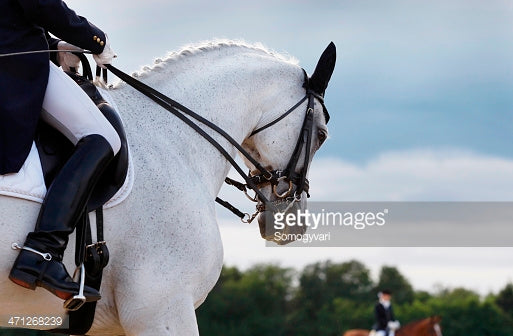The size of a Clydesdale horse has changed quite a bit over the last 100 years. In the 1920s, the Clydesdale was a breed that was more compact and even smaller than Shires or Belgians. Since the 1940s, when selective breeding was used to create taller Clydesdales, it has slowly become one of the largest horse breeds in the world today.
When looking at how heavy the modern Clydesdale horse happens to be, the average horse will weigh between 1,800-2,000 pounds. Most Clydesdales stand between 16-18 hands in height. Males tend to be taller and weigh more, with some reaching a height of 20+ hands and weighing between 2,600-3,000 pounds.
Females tend to be at the lower end of the spectrum, often hovering around 16 hands and weighing less than 1 ton.
A Clydesdale Horse May Be One of the World’s Largest Horses
Published in 2009, The Telegraph reports on a Clydesdale horse that is named Poe. Living on a farm in Tupperville, Ontario, Canada, Poe has been measured at 20.2 hands and weighs a total of 3,000 pounds.
In measurements, a hand is four inches, which means a horse standing at 18 hands would be 6 feet tall at the shoulder. From the ground to the top of his head, however, Poe is an impressive 10 feet in size.
Since a Clydesdale horse can pull its own weight several times over, a horse like Poe was often a prized possession for farmers. Even if the horse could only pull just 5 times its own weight, that would be the equivalent of being able to pull 7.5 tons for Poe. This is one of the many reasons why they were selectively bred for size.
Not only did the taller animals make for a more impressive visual impact, but their strength and leverage were increased as well.
\nWe've got a Clydesdale horse & carriage coming to LOTQ this year // Rides are $1 & benefit Make a Wish! pic.twitter.com/mQXsuLjETy
— CAB (@MC_CABevents) November 27, 2016
How Big is the Hoof of a Clydesdale Horse?
In order to support all of that weight, a Clydesdale horse has one of the largest feet of any horse. Just one of their horseshoes is about the same size as your average dinner plate. The horseshoe on its own weighs about 5 pounds. In comparison, the hooves of the average Thoroughbred racing horse are about 25% of this size.
Around the hoof is a lot of hair. This is referred to as “feathering,” which occurs at the spat of the leg, or where it can drape over the hoof. It was originally developed as a way to protect the legs of the horse from difficult farm and work conditions. Today, feathering is usually just for show. Some owners may even prefer to trim the feathers as they can retain moisture and could lead to health conditions like rain rot.
A lot of food is required to support all of that size as well. The average adult Clydesdale can eat up to 50 pounds of hay every day – and sometimes more, if they have had a day with a heavy workload. They may also eat up to 10 pounds of prepared feed or grains each day in addition to their hay.
How Much Do Newborn Clydesdales Weigh?
Even the Clydesdale foals are bigger than most other baby horses. After a typical pregnancy of about 11 months, a newborn foal can weigh up to 180 pounds at birth. A mare will then produce up to 100 pounds of milk every day for her new foal. In the first few months of life, it is not unusual for a Clydesdale foal to gain 30 pounds per week.
\nOne of the Budweiser's Horses named Jack we had the privilege to pet this beauty a Clydesdale Horse. pic.twitter.com/ltRKiXE9MK
— Hector Del Valle Jr. (@latinforever99) December 8, 2016
Despite their size, many Clydesdale horses are very affordable, assuming that their feeding requirements can be met. Most horses will sell for less than $5,000, with many often priced for as little as $1,000. Pricing for Clydesdales is often based on the color, markings, size, and age of the horse. Genetics may also play a factor.
Top-level horses in this breed, however, may often sell for hundreds of thousands of dollars.
Can You Ride a Clydesdale Horse?
Despite their large size, Clydesdale horses can definitely be ridden. Customized equipment is often required to do so, since the bits, bridles, and saddles must accommodate their larger size. This horse typically has a mild temperament, loves to work, and remain calm in virtually any situation.
How heavy is a Clydesdale horse? They might weigh up to 1.5 tons, but most of them are about as gentle as a puppy. If you happen to see one, go on up to it and say hello. Offer a treat if it is allowed. When you do, you’ll be able to make a friend for life.




